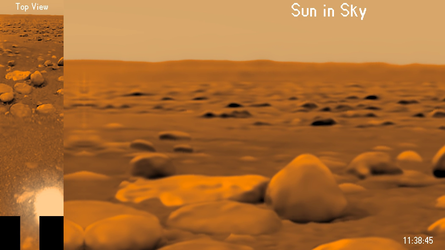Accept all cookies Accept only essential cookies See our Cookie Notice

About ESA
The European Space Agency (ESA) is Europe’s gateway to space. Its mission is to shape the development of Europe’s space capability and ensure that investment in space continues to deliver benefits to the citizens of Europe and the world.
Highlights
ESA - United space in Europe
This is ESA ESA facts Member States & Cooperating States Funding Director General Top management For Member State Delegations European vision European Space Policy ESA & EU Space Councils Responsibility & Sustainability Annual Report Calendar of meetings Corporate newsEstablishments & sites
ESA Headquarters ESA ESTEC ESA ESOC ESA ESRIN ESA EAC ESA ESAC Europe's Spaceport ESA ESEC ESA ECSAT Brussels Office Washington OfficeWorking with ESA
Business with ESA ESA Commercialisation Gateway Law at ESA Careers Cyber resilience at ESA IT at ESA Newsroom Partnerships Merchandising Licence Education Open Space Innovation Platform Integrity and Reporting Administrative Tribunal Health and SafetyMore about ESA
History ESA Historical Archives Exhibitions Publications Art & Culture ESA Merchandise Kids Diversity ESA Brand Centre ESA ChampionsLatest
Space in Member States
Find out more about space activities in our 23 Member States, and understand how ESA works together with their national agencies, institutions and organisations.
Science & Exploration
Exploring our Solar System and unlocking the secrets of the Universe
Go to topicAstronauts
Missions
Juice Euclid Webb Solar Orbiter BepiColombo Gaia ExoMars Cheops Exoplanet missions More missionsActivities
International Space Station Orion service module Gateway Concordia Caves & Pangaea BenefitsLatest
Space Safety
Protecting life and infrastructure on Earth and in orbit
Go to topicAsteroids
Asteroids and Planetary Defence Asteroid danger explained Flyeye telescope: asteroid detection Hera mission: asteroid deflection Near-Earth Object Coordination CentreSpace junk
About space debris Space debris by the numbers Space Environment Report In space refuelling, refurbishing and removingSafety from space
Clean Space ecodesign Zero Debris Technologies Space for Earth Supporting Sustainable DevelopmentLatest
Applications
Using space to benefit citizens and meet future challenges on Earth
Go to topicObserving the Earth
Observing the Earth Future EO Copernicus Meteorology Space for our climate Satellite missionsCommercialisation
ESA Commercialisation Gateway Open Space Innovation Platform Business Incubation ESA Space SolutionsLatest
Enabling & Support
Making space accessible and developing the technologies for the future
Go to topicBuilding missions
Space Engineering and Technology Test centre Laboratories Concurrent Design Facility Preparing for the future Shaping the Future Discovery and Preparation Advanced Concepts TeamSpace transportation
Space Transportation Ariane Vega Space Rider Future space transportation Boost! Europe's Spaceport Launches from Europe's Spaceport from 2012Latest

DISR movie
This movie, built with data collected during ESA Huygens' mission at Titan on 14 January 2005, shows the operation of the DISR camera during its descent up to touch- down. The almost 4-hour long operation of DISR is shown in less than five minutes - 40 times the actual speed up to landing and 100 times the actual speed thereafter (for a complete description click here).
The first part of the movie shows how Titan looked to DISR as it acquired more and more images during the probe's descent. Each DISR image has a small field of view, and dozens of images were made into mosaics of the whole scene.
The scientists analysed Huygens' speed, direction of motion, rotation and swinging during descent. The DISR movie includes sidebar graphics that show:
- (Lower left corner) Huygens' trajectory views from the south, a scale bar for comparison to the height of Mount Everest, colored arrows that point to the sun and to the Cassini orbiter.
- (Top left corner) A close-up view of the Huygens probe highlighting large and unexpected parachute movements, and a scale bar for comparison to human height.
- (Lower right corner) A compass that shows the changing direction of view as Huygens rotates, along with the relative positions of the sun and Cassini.
- (Upper right corner) A clock that shows Universal Time for Jan. 14, 2005 (Universal Time is two hours earlier with respect to Central European Summer Time). Above the clock, events are listed in Mission Time, which starts with the deployment of the first of the three parachutes.
Sounds from a left speaker trace Huygens' motion, with tones changing with rotational speed and the tilt of the parachute. There also are clicks that clock the rotational counter, as well as sounds for the probe's heat shield hitting Titan's atmosphere, parachute deployments, heat shield release, jettison of the DISR cover and touch-down.
Sounds from a right speaker go with DISR activity. There's a continuous tone that represents the strength of Huygens' signal to Cassini. Then there are 13 different chimes - one for each of DISR's 13 different science parts - that keep time with flashing-white-dot exposure counters.
During its descent, DISR took 3500 exposures.
Video by Erich Karkoschka, University of Arizona, USA.
-
CREDIT
ESA/NASA/JPL/University of Arizona -
LICENCE
ESA Standard Licence

Huygens' descent to the surface of Titan - DISR movie

Huygens's descent to Titan's surface

Huygens's descent to Titan's surface

DISR view of Titan’s surface from 1.2 km















 Germany
Germany
 Austria
Austria
 Belgium
Belgium
 Denmark
Denmark
 Spain
Spain
 Estonia
Estonia
 Finland
Finland
 France
France
 Greece
Greece
 Hungary
Hungary
 Ireland
Ireland
 Italy
Italy
 Luxembourg
Luxembourg
 Norway
Norway
 The Netherlands
The Netherlands
 Poland
Poland
 Portugal
Portugal
 Czechia
Czechia
 Romania
Romania
 United Kingdom
United Kingdom
 Slovenia
Slovenia
 Sweden
Sweden
 Switzerland
Switzerland
























